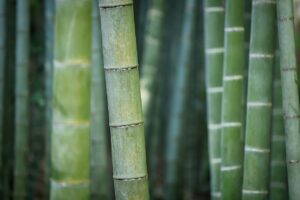In this post, we’ll explore a selection of trees suitable for backyards, delving into their unique characteristics, benefits, and optimal growing conditions.
Dogwood (Cornus)
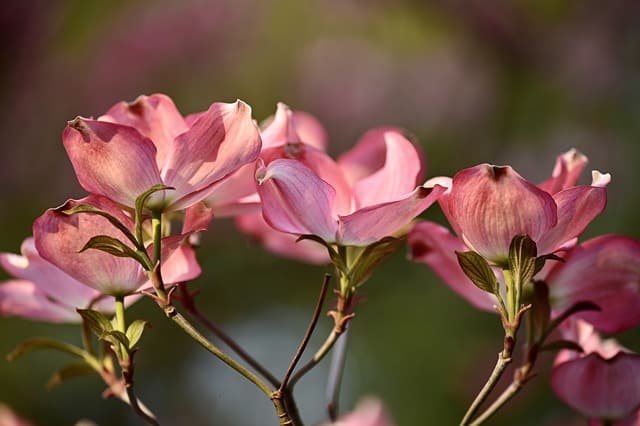
Dogwoods are a favorite among homeowners for their stunning spring blooms and distinctive bark. With various species available, the flowering dogwood, Cornus florida, stands out with its white, pink, or red blossoms that transform any backyard into a picturesque scene during the spring months. This tree typically grows to about 15 to 30 feet high with a similar spread, making it an excellent option for smaller spaces.
In addition to its aesthetic appeal, dogwoods are relatively low-maintenance, thriving in well-drained soil and partial shade to full sun. They attract a variety of pollinators, including bees and butterflies, which adds to their ecological value. Moreover, their beautiful fall foliage, ranging from purple to deep red, ensures year-round interest in your garden.
Saucer Magnolia (Magnolia x soulangeana)
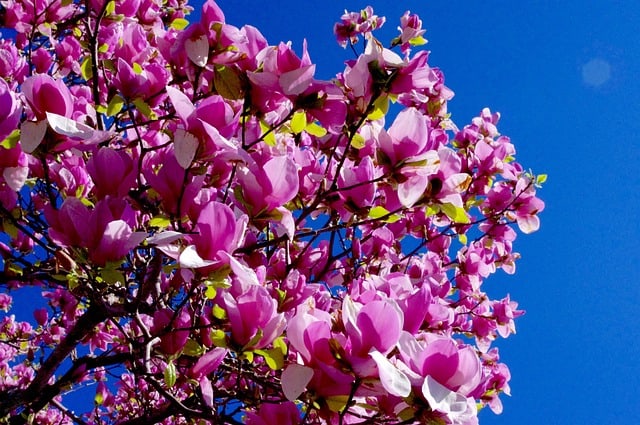
If you’re searching for a striking focal point for your backyard, consider the saucer magnolia. This hybrid tree, a cross between the star magnolia and the Chinese magnolia, boasts large, tulip-shaped flowers that can measure up to 10 inches across. Blooming in early spring, the saucer magnolia presents shades of pink and white that brighten up any area, often before its leaves fully emerge.
Growing up to 30 feet tall, this deciduous tree thrives best in full sun to partial shade and prefers well-drained, slightly acidic soil. The tree’s rounded form and dense foliage provide excellent shade, making it an ideal spot for relaxation in warmer months. Moreover, birds are drawn to its seeds, which enhances its ecological role in your backyard.
Sugar Maple (Acer saccharum)
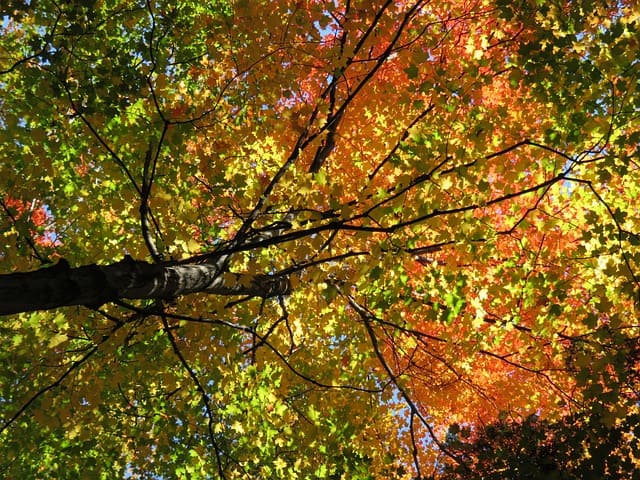
Renowned for its spectacular fall colors, the sugar maple is a staple in many North American backyards. This majestic tree can reach heights of 60 to 75 feet, offering ample shade and grandeur. Beyond aesthetics, sugar maples are tapped for their sap, which is used to produce delicious maple syrup, making them functional as well as beautiful.
Sugar maples thrive in full sun but are adaptable to shady environs. They prefer fertile, well-drained soils and can withstand a range of conditions, making them a hardy choice for various climates. Their stunning yellow, orange, and red fall foliage provides a breathtaking backdrop for outdoor activities, ensuring this tree will be a highlight throughout the seasons.
‘Green Giant’ Arborvitae (Thuja ‘Green Giant’)
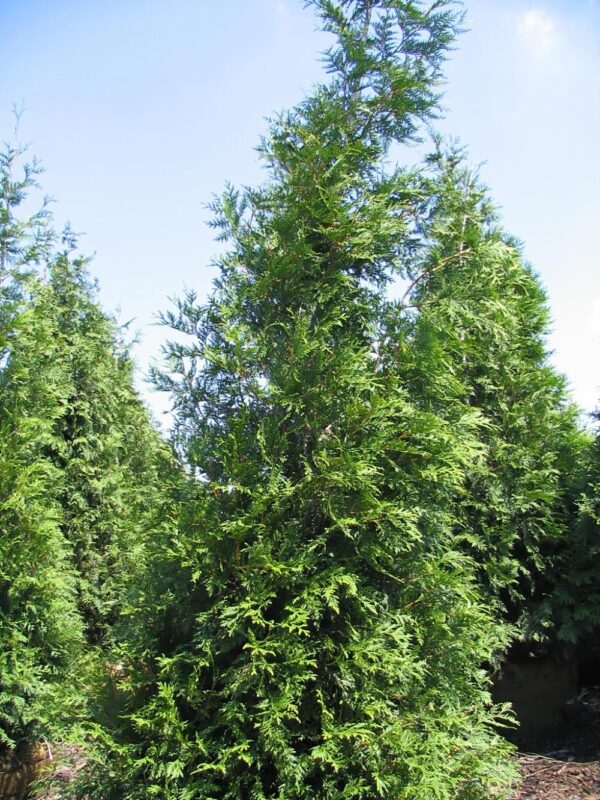
If you’re seeking a tree that offers both privacy and year-round greenery, look no further than the ‘Green Giant’ arborvitae. This fast-growing evergreen can reach heights of 30 to 50 feet, making it a popular choice for hedges and windbreaks. Its dense foliage provides a natural screen that blocks out noise and offers privacy from neighbors.
The ‘Green Giant’ arborvitae prefers full sun and well-drained soil but can tolerate a range of conditions, making it a versatile addition to your backyard. Additionally, this tree is resistant to many pests and diseases, minimizing maintenance and allowing you to enjoy its beauty without constant care. Its lush greenery in winter offers a beautiful contrast to the starkness of a snowy landscape.
Weeping Cherry (Prunus pendula)
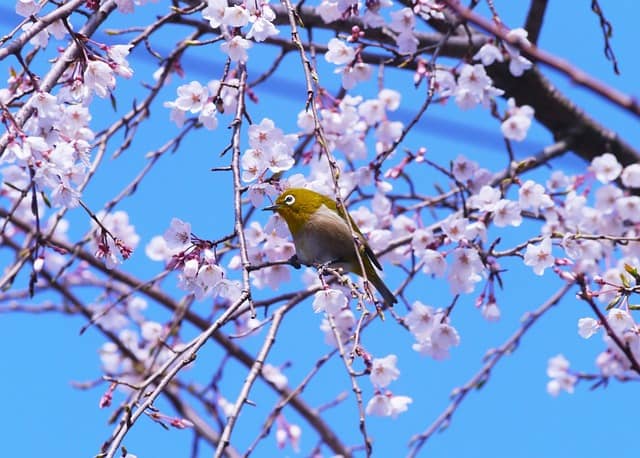
For a touch of elegance, the weeping cherry tree is a stunning choice. Characterized by its cascading branches adorned with delicate pink or white blossoms, this tree creates a spectacular visual display in spring. The weeping cherry typically grows to about 20 to 30 feet tall, making it an ideal specimen for smaller yards or as an ornamental feature.
Weeping cherries do best in full sun and well-drained soil, thriving in a variety of conditions. Their unique structure and beautiful blooms attract pollinators, enriching the local ecosystem. As summer progresses, the tree’s green leaves add a lush layer to your backyard, and in fall, the foliage turns vibrant shades of yellow and orange, ensuring season-long appeal.
Red Oak (Quercus rubra)
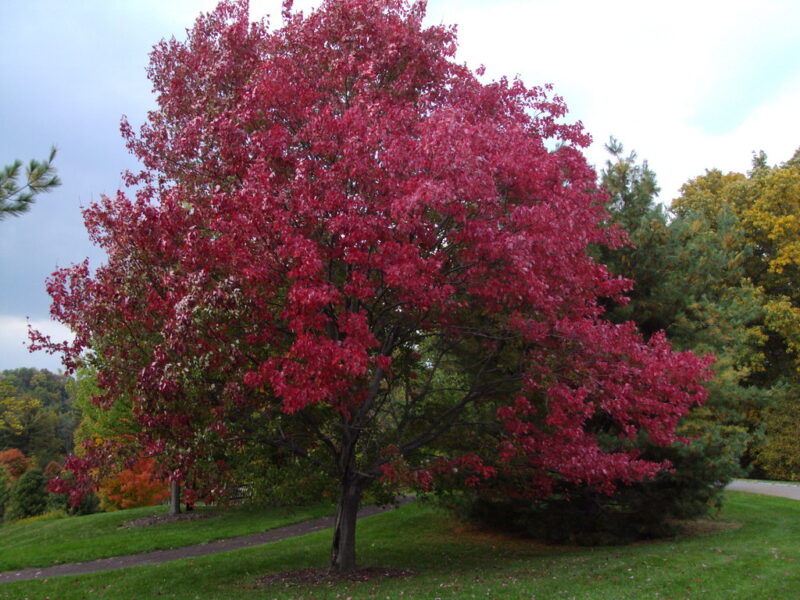
The red oak is a towering giant that commands attention in any backyard. Reaching heights of 60 to 75 feet, this deciduous tree is known for its impressive stature and rapid growth. Its acorns provide food for various wildlife, making it an ecological asset for backyard biodiversity.
Red oaks thrive in full sun and adapt well to various soil types, though they prefer well-drained sandy or loamy soils. In autumn, this tree showcases brilliant red hues, making it a majestic sight. Additionally, its strong wood is valued commercially, but in your backyard, it’s primarily a majestic focal point that invites birds and other wildlife to visit.
American Holly (Ilex opaca)
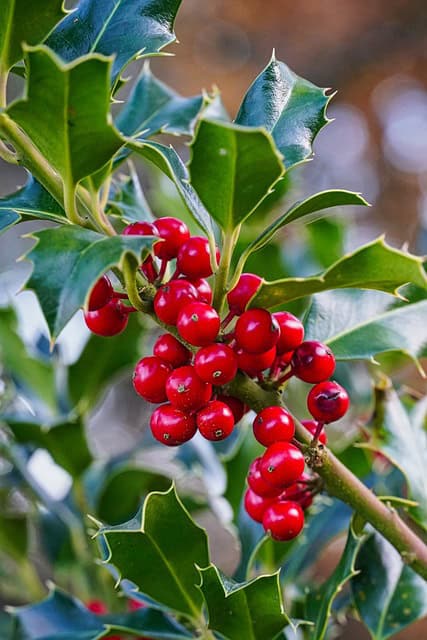
American holly is a versatile tree that brings joy year-round. Its shiny, dark green leaves adorned with sharp spines provide an attractive contrast throughout the seasons. In late spring, small white flowers bloom, which later develop into vibrant red berries, offering a food source for birds in winter.
Typically growing to 15 to 30 feet tall, the American holly prefers acidic, well-drained soil and can thrive in shaded or sunny locations. Its evergreen nature ensures that your backyard maintains a vibrant look even in the coldest months. This beautiful tree can also be pruned into different shapes, making it an excellent choice for gardeners who enjoy a bit of flexibility in their design.
Eastern Redbud (Cercis canadensis)
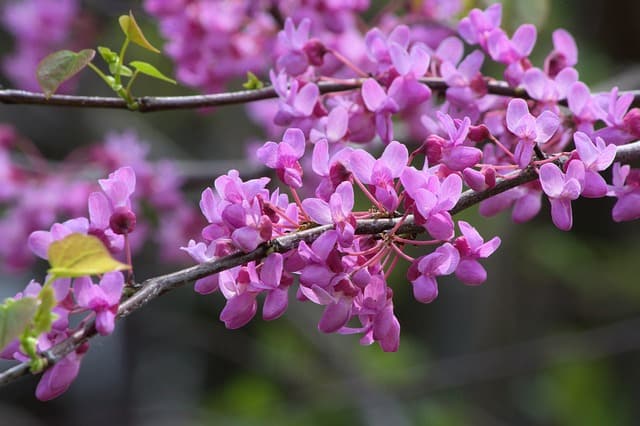
The eastern redbud is celebrated for its cloud-like clusters of pink flowers, which emerge before the leaves in early spring. This small ornamental tree generally grows to about 20 to 30 feet tall, making it suitable for various yard sizes, particularly those seeking a stunning and vivid addition.
Preferably, redbuds thrive in well-drained soil and can do well in full sun to partial shade. Their heart-shaped leaves add an attractive texture to the landscape, and the tree itself provides habitat for multiple pollinators. Additionally, in the fall, the leaves turn a beautiful yellow, enhancing its aesthetic appeal.
Tulip Tree (Liriodendron tulipifera)
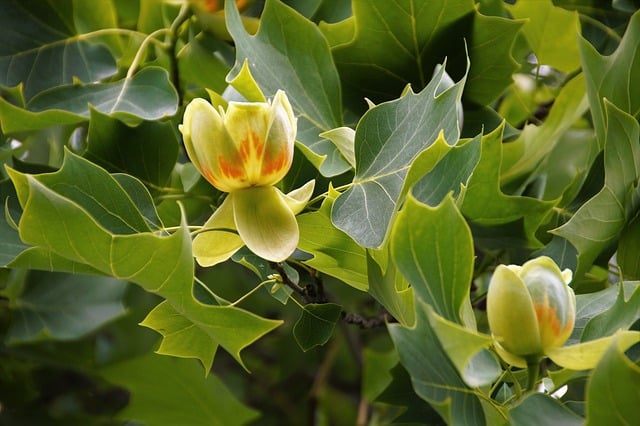
The tulip tree presents a unique form and is known for its striking tulip-shaped flowers and large, star-like leaves. Often growing to heights of 70 to 100 feet, it provides an impressive vertical element to your backyard landscape. These trees prefer full sun and moist, well-drained soil, thriving in both urban and rural settings.
Tulip trees are fast growers and can provide shade relatively quickly, making them an ideal choice for homeowners looking to establish a canopy in a short amount of time. The flowers bloom in late spring and are rich in nectar, attracting many pollinators. With its majestic structure and vibrant summer colors, the tulip tree becomes a focal point in any backyard.
Paper Birch (Betula papyrifera)
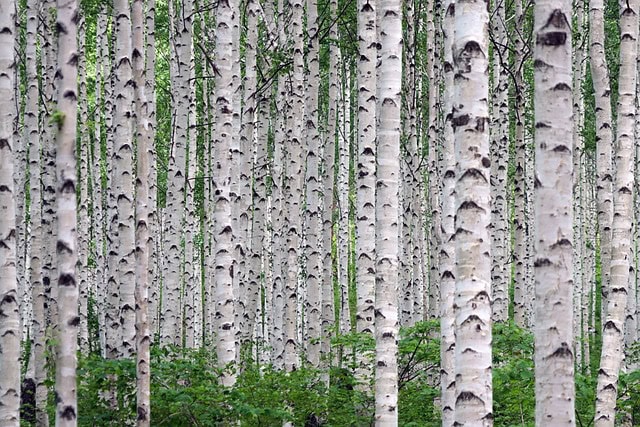
The paper birch is a stunning tree with distinctive white bark that peels away in papery strips, giving it an attractive texture year-round. Typically reaching heights of 50 to 70 feet, this tree thrives in well-drained, moist soil and enjoys full sun to partial shade.
Paper birches are equipped to support various bird and insect species, enhancing your backyard’s ecological health. The golden-yellow leaves in autumn are breathtaking, ensuring seasonal beauty. Known for its striking appearance, the paper birch requires a bit of care to ensure it remains healthy, but its beauty is worth the effort.
Crabapple (Malus)

The crabapple tree is a delightful addition to any backyard, boasting beautiful blossoms in various white, pink, or red shades. These ornamental trees typically reach heights of 15 to 30 feet, making them a fantastic choice for smaller yards or urban settings. Moreover, their small apples provide food for many birds and wildlife.
Crabapple trees thrive in well-drained soil and prefer full sun to flourish. They are relatively resistant to pests and diseases, which lowers maintenance needs. In addition to their gorgeous spring blooms, they also display vibrant autumn foliage, ensuring appeal throughout the growing season. Their fruit can be used for making jellies or left to nourish local fauna.
Fringe Tree (Chionanthus virginicus)
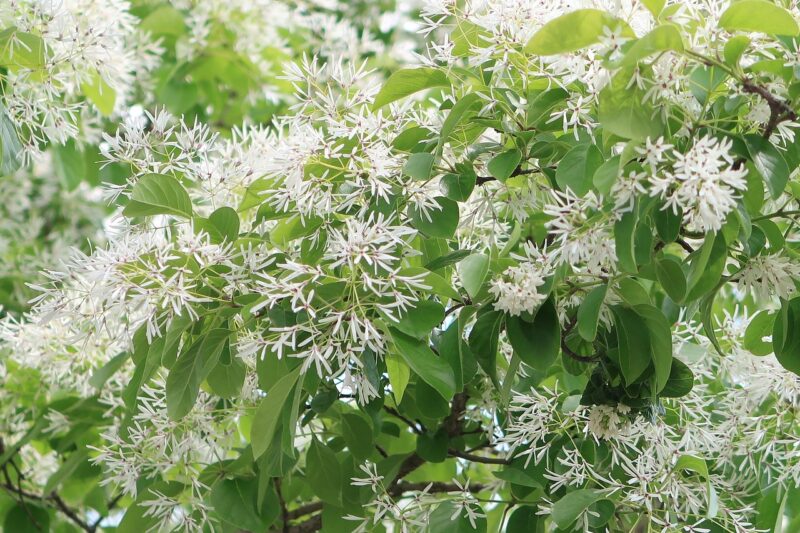
If you’re looking for a distinctive tree that’s a bit less common, consider the fringe tree. Known for its delicate, fringe-like white flowers that bloom in late spring, this tree offers a unique visual allure. Typically growing to about 12 to 20 feet, it’s ideal for smaller backyards or as an ornamental feature in larger settings.
Fringe trees prefer well-drained soils and can thrive in full sun or partial shade. Their ability to attract pollinators, including bees and butterflies, provides added ecological benefits. Beyond its beauty, the tree’s green foliage turns yellow in the fall, ensuring it’s visually striking throughout the year.
Washington Hawthorn (Crataegus phaenopyrum)
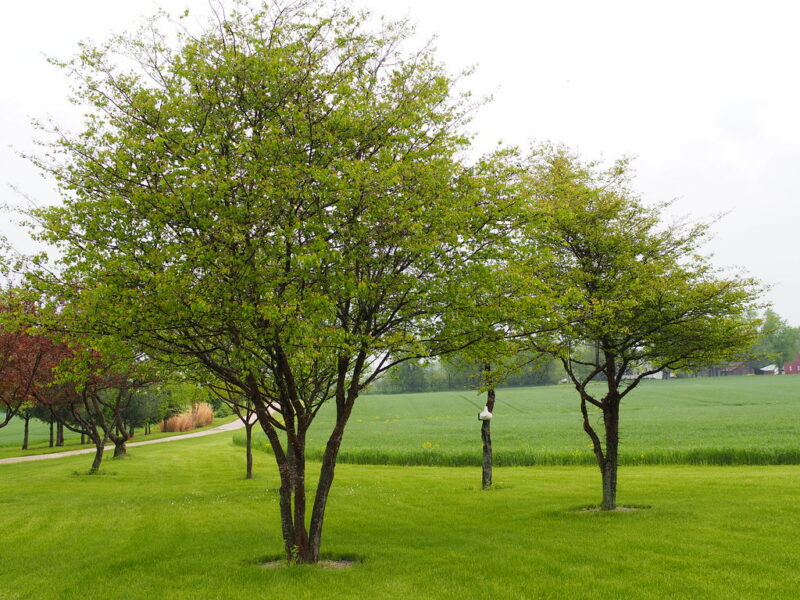
The Washington hawthorn is an ideal choice for gardeners seeking a small yet impactful tree. This deciduous tree grows to about 20 to 30 feet and is recognized for its beautiful white flowers in spring, vibrant red berries in fall, and stunning red foliage. As a result, it’s often used as a specimen tree or in group plantings for a dynamic landscape.
These trees are adaptable but prefer well-drained soil and full sun to partial shade. Their thorny branches can deter unwanted animals, making them a great protective addition to gardens. Wildlife benefits from its fruits during the colder months when food may be scarce, reinforcing its ecological contributions.
Serviceberry (Amelanchier)
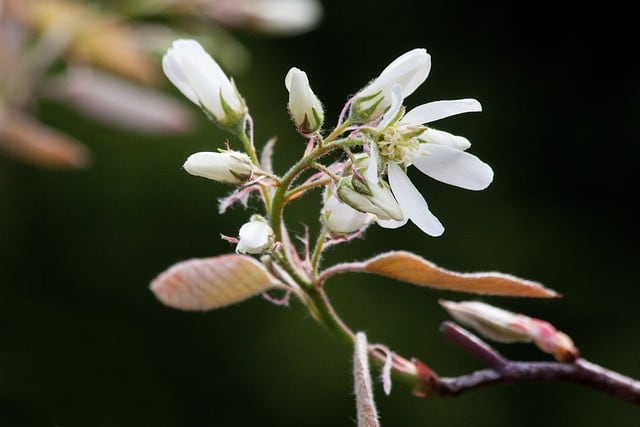
Serviceberry trees, also known as Juneberry, are versatile and valuable, featuring beautiful white flowers in the spring followed by small, sweet berries in early summer. Growing up to 15 to 30 feet, they are perfect for smaller yards and can also be pruned to maintain a specific shape or size.
These trees prefer full sun to partial shade and well-drained soil. Their adaptability endears them to many gardeners. The berries attract various birds and can be used in jams or desserts, showcasing the tree’s multifunctionality. Additionally, the vibrant fall colors range from yellow to orange to red, making serviceberry a year-long standout.
Catalpa (Catalpa)
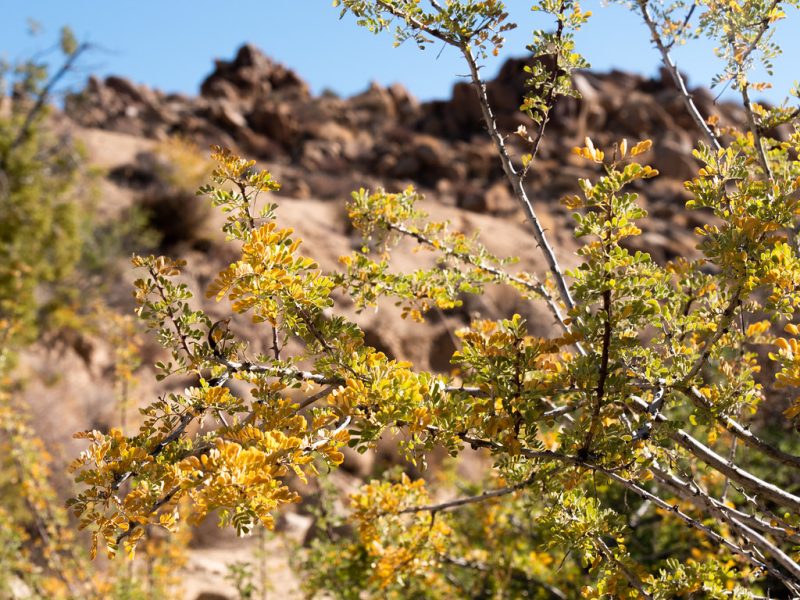
For larger backyards, the catalpa tree presents ample shade and unique visual appeal. Known for its large heart-shaped leaves and showy white flowers, catalpa can grow to heights of 30 to 60 feet. The tree’s irregular form and prominent seed pods make it an interesting choice for the landscape.
Catalpas thrive in full sun and are adaptable to a range of soil types, including poor soils. Their large leaves provide a dense canopy, which can reduce cooling costs during the hot summer months. Aside from its shade, the catalpa attracts butterflies, making it a delightful choice for wildlife enthusiasts.
Fig (Ficus carica)
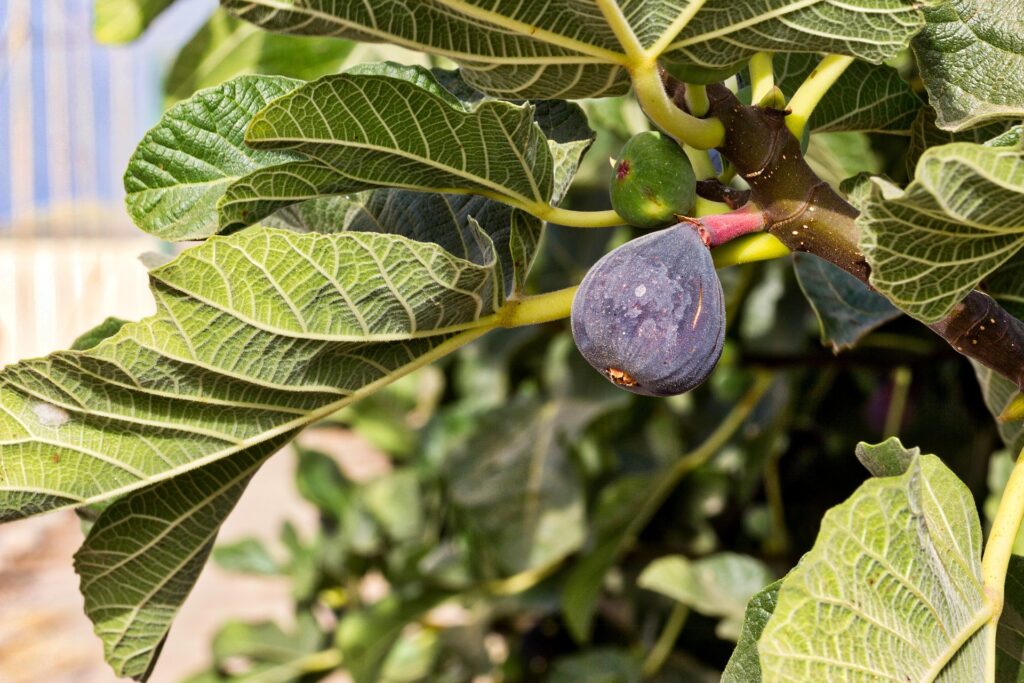
Fig trees are not only beautiful but also productive, offering delicious fruit that is enjoyed fresh or dried. Typically growing to about 10 to 30 feet, fig trees can be an attractive addition to backyard gardens. Their broad, lobed leaves provide dense shade, ideal for creating cozy outdoor spaces.
These trees thrive in full sun and well-drained soil, making them relatively easy to maintain. They are tolerant of drought once established but require regular watering during dry spells for optimal fruit production. Moreover, figs attract birds and beneficial insects, ensuring your garden remains vibrant and active.
Olive (Olea europaea)
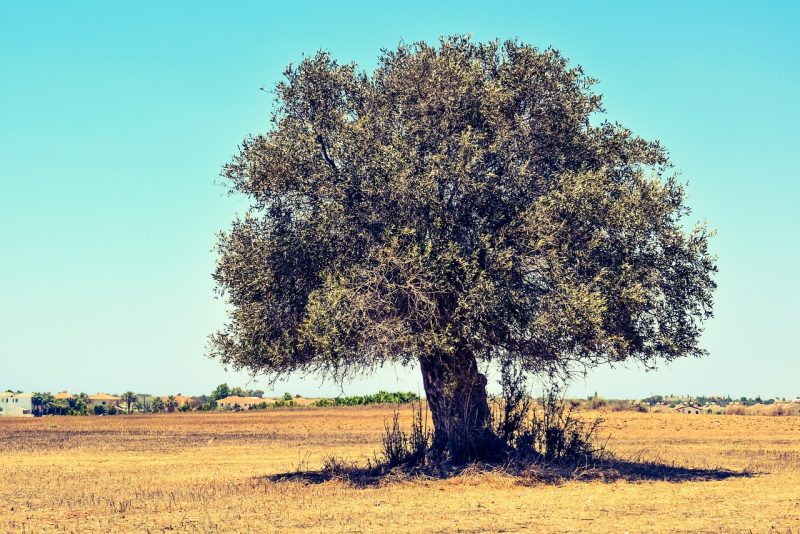
For those with a Mediterranean flair in mind, the olive tree is an excellent choice. Known for its silvery leaves and gnarled trunk, this evergreen tree thrives in warm climates and well-drained soil. Generally, olives can grow from 20 to 30 feet high, making them ideal for creating shade or as part of a Mediterranean garden theme.
Once established, olive trees are drought-tolerant and require minimal maintenance. Although they’re gorgeous all year round, their small white flowers in spring add an extra touch of beauty. Additionally, the fruits harvested from olive trees can be pressed into oil, offering culinary benefits in addition to their ornamental value.
Eastern White Pine (Pinus strobus)
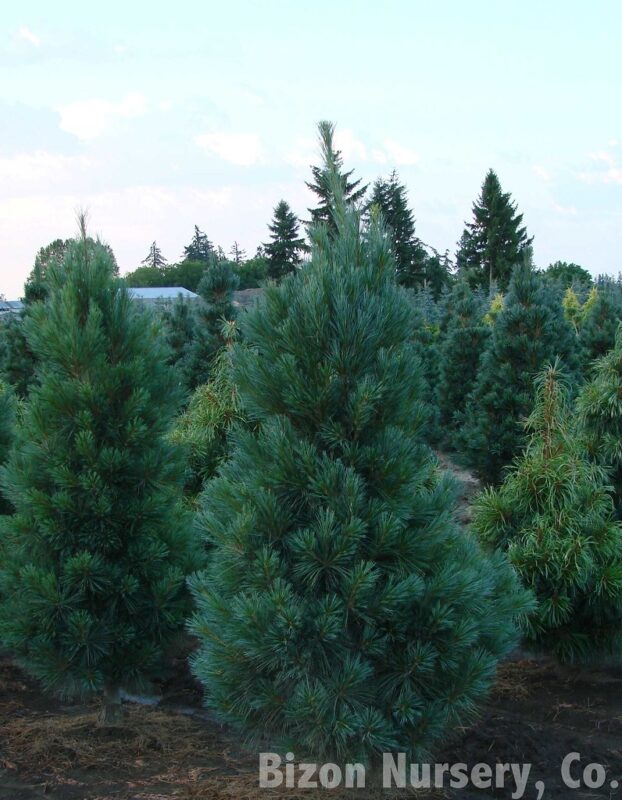
If you desire an evergreen tree that brings a sense of majesty to your backyard, consider the eastern white pine. This towering conifer can grow up to 50 to 80 feet tall, making it a great specimen tree for larger yards. Its long, soft needles create a beautiful texture, especially against a backdrop of colorful foliage.
Eastern white pines adapt well to various soil types and thrive in full sun to partial shade. They provide habitat for birds and small animals, adding biodiversity to your backyard landscape. Their timeless beauty and majestic presence make them a natural choice for anyone wanting a significant statement piece in their yard.
Desert Willow (Chilopsis linearis)
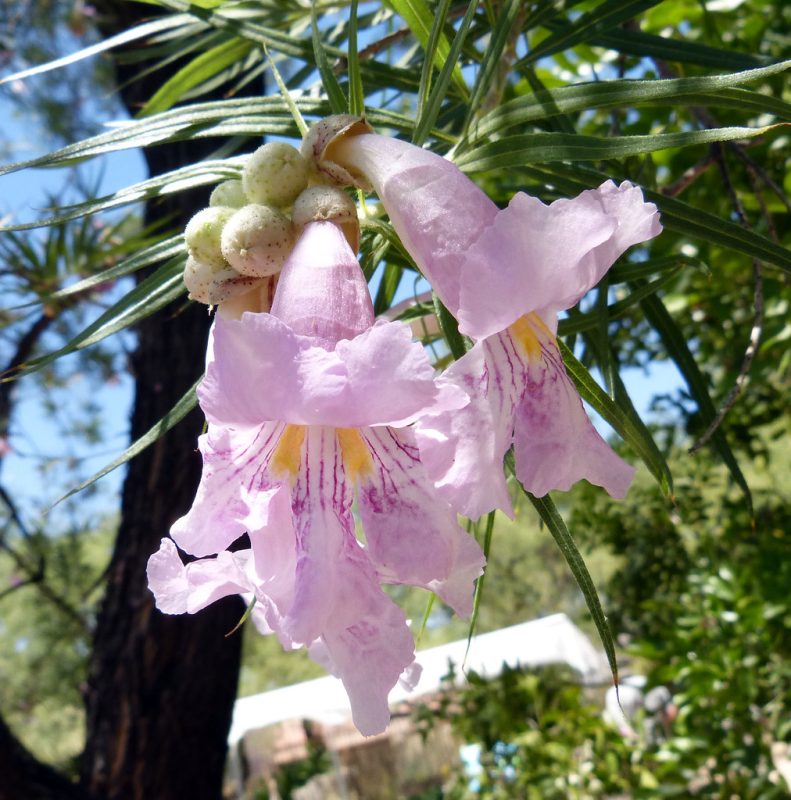
Perfect for those in hotter climates, the desert willow is a hardy, drought-tolerant tree. Although it can reach up to 25 feet tall, it typically maintains a slender form, making it suitable for smaller spaces. Its showy, trumpet-shaped flowers bloom in shades of pink and purple during the warmer months, providing a beautiful focal point.
Desert willows thrive in well-drained soils, enjoying full sun exposure. Their flowers are particularly attractive to hummingbirds and other pollinators, increasing the biodiversity of your backyard. Whether used in a formal garden or a relaxed landscape, the desert willow brings a lovely aesthetic without requiring extensive care.




